In this article, you’ll learn about customer segmentation models and how you can use them to improve your business.
Table of Contents
- What is a customer segment?
- What is customer segmentation?
- What are the benefits of customer segmentation?
- Customer Segmentation Analysis
- Customer Segmentation Software
- Segment Customers to Grow Better
What is customer segmentation?
Customer segmentation is the tagging and grouping of customers with shared characteristics like age, industry, gender, etc. Customer segmentation personalizes your marketing, service, and sales efforts to the needs of specific groups. The result is a potential boost to customer loyalty and conversions.
You're already familiar with customer segmentation in your personal life. For example, you might tell everyone in your family about a promotion with a group text before you email your co-workers.
The same goes for your customers. They each have unique needs, traits, pain points, and expectations for your business.
Sometimes, the most effective way to communicate with your target customers is to make them part of a group.
P.S. We’ve created a HubSpot Segmentation Training, which comes in handy when breaking down your audience types.
What is a customer segment?
A customer segment is a group of consumers who share similar characteristics and needs. By identifying and understanding your different customer segments, businesses can tailor their products, services, and marketing efforts to better meet the specific needs of each segment. This can lead to more effective marketing, increased customer loyalty, and better overall profitability.
What are the benefits of customer segmentation?
Segmenting customers goes beyond putting people into categories. When you segment customers, you learn about them deeply and use that info to create content for each segment's unique needs and challenges.
Windy Pierre, an eCommerce Growth Marketer, tells me segmentation is the cornerstone of his strategy. Pierre says, “At its core, segmentation allows us to meet customers where they are in their buying journey, tailoring our communication and support to drive both satisfaction and loyalty.”
Segmenting can improve your customer service and support efforts and help internal teams prepare for challenges different groups are likely to experience.
It also allows you to communicate with segments of customers through preferred channels or platforms and helps you find new opportunities for products, support, and service efficiently.
Let's go over some common benefits of customer segmentation.
1. Get a competitive marketing edge.
“If you deliver a personalized customer experience via email or CRM, you’ll always have an edge over competitors that use a one-size-fits-all approach,” says Michael Maximoff, co-founder at Belkins.
Maximoff points to Driveline, a retail brand that Belkins worked with to generate leads. To get the best results, Maximoff’s team split Driveline’s ideal customers into two segments. The first was retailers — the second, brands.
He continues, “We then drilled down again and divided each segment into previous and new clients before sending them customized messages. The outcome of this customer segmentation process was the closing of a $1.5M deal.”
2. Target customers better with paid campaigns.
Whether you’re running PPC, LinkedIn ads, or Facebook ads, optimizing your campaign gets you a better return on your ad spend. This is one area where customer segmentation shines.
“With paid marketing on social media, we’ve realized that we need to know our audience demographic and their interests. By segmenting customers into different groups, we can identify the unique needs, preferences, and behaviors of each segment,” says Adam Wright, founder of Human Tonik.
Segmentation lets you engage the right customers with relevant ads, which can lead to higher click-through rates, conversions, and sales. This also ensures you spend more effort on customers that provide a high return while lowering your ad spend for less profitable customer segments.
3. Improve your email nurture campaigns.
What appeals to Gen Z might be unappealing to millennials. The same applies to entry-level workers versus directors in the same field. These are all different segments of people with unique ways of thinking and know-how.
Understanding these customers lets you segment them in your email list so you can send relevant nurture emails that endear them to your brand.
Corey Donovan, President of Alta Technologies, says this shows customers you want to cater to their needs rather than clutter their inboxes.
Now that you understand what customer segmentation is, let’s cover the most common types of segmentation.
Although this list doesn’t cover every type of customer segmentation, you should have a good starting point to establish your customer segmentation model.
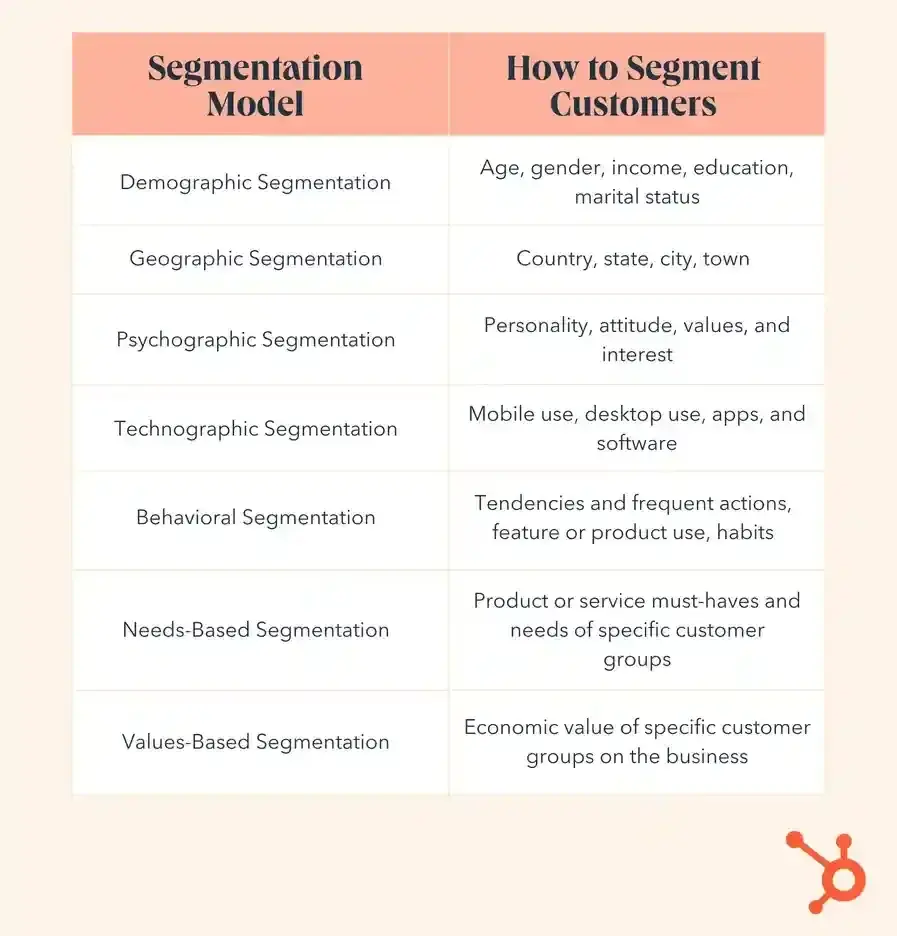
1. Demographic Segmentation
Demographic segmentation is the most common type of customer segmentation model that categorizes your audience on various data points. It includes data points like age, gender, income, education, and marital status.
Demographic segmentation narrows down the large part of the audience into different smaller segments with some common variables. Businesses can combine two or three demographic characteristics to target the niche audience for their products.
For example, a luxury clothing brand for women would segment the customers based on two characteristics — income and age. They would advertise different styles and price points based on the age and income of their segments.
However, don’t consider demographic segmentation only for marketing purposes. Brands also leverage demographic segmentation for market research, improving customer relationships, and building brand loyalty.
Ecommerce and fashion are two popular industries where demographic segmentation holds sway. In the example below, Fenty Beauty uses demographic analysis to target women from various ethnicities.
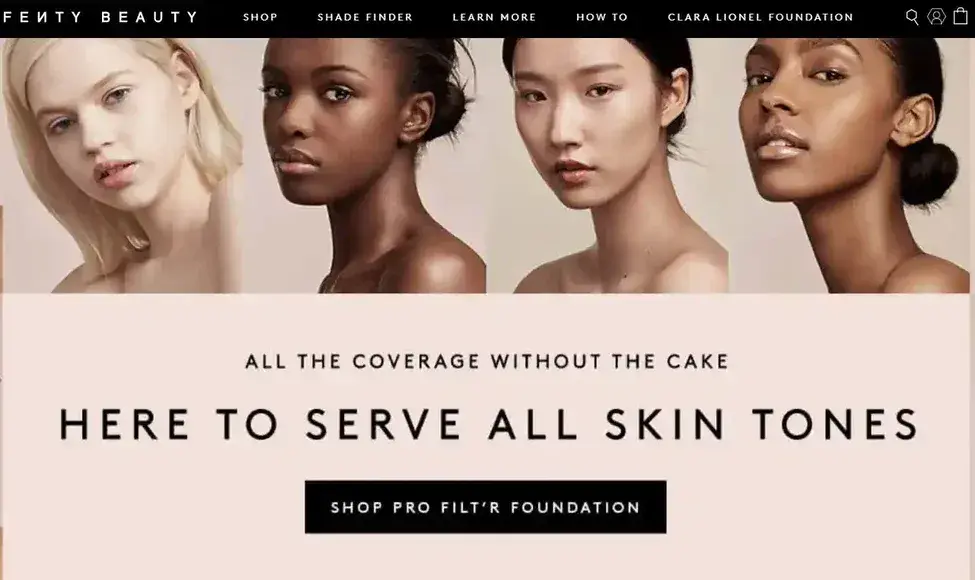
Brands use demographic analysis with customer surveys to understand customer preferences and behavior. Using this data from the survey, brands can launch successful campaigns or tailor their brands according to customer preferences.
Benefits
- Enables brands to send more personalized marketing messages.
- Cuts down your marketing budget and tailors the campaign only for the most relevant audience.
- Brands can identify, monitor, and track their trends and map customer journeys to make future predictions.
2. Geographic Segmentation
Segmentation by geography divides customers based on location, including country, state, city, and town. Segmenting customers based on their geography lets you tailor your messaging specific to their requirements. It’s like physically talking to a city, town, or country.
With this segmentation model, brands can run campaigns for:
- Locations celebrating local holidays.
- Countries or provinces experiencing weather changes.
- Regions with different cultures and traditions.
By using their slang or stating things they relate with in their locality, they see the thought you put into your content and instantly know that your message is specifically for them.
McDonald’s, for instance, runs ads specific to different countries.
Brands can also use geographic segmentation to innovate their products. For example, Lay’s uses over 200 varieties of flavors across the world. It markets vegetarian flavors like Magic Masala, Tangy Tomato, and Chile Lemon in India, while in Thailand, the company markets non-veg flavors like Khao Soi Chicken, BBQ Pork, and Crab.
Benefits
- Businesses can set prices according to the budget and economic allowance of specific areas.
- Gives a competitive edge since the campaigns and products align better with the understanding of the geographical audience.
- Helps with the understanding of laws and regulations and market constraints before product launch.
3. Psychographic Segmentation
Psychographic segmentation targets consumers based on their cognitive and psychological traits. This segmentation model groups the consumer based on certain characteristics like personality, attitude, values, and interests.
By understanding the core behavior of the customers, including their hobbies, lifestyle, social status, and opinions, brands can craft emotionally-driven campaigns. With customers making purchase decisions through their subconscious mind, it makes sense to consider psychographic segmentation in your marketing campaigns.
A good example of psychographic segmentation is that of a shoe brand like Puma. The brand can tap into the users with different interests like running, basketball, or trekking. Using this segmentation information, Puma can target the right individuals with different interests.
Use customer surveys and monitor your audience’s online activity in tandem with a customer segmentation tool. You can also understand marketing psychographics by reading online reviews, using recorded calls, and involving focus groups.
Benefits
- Brands can communicate with their customers on an emotional level.
- Improves your reach through word-of-mouth marketing from people in the same social groups and interests.
- Increased customer engagement and brand loyalty.
4. Technographic Segmentation
Technographic segmentation segments consumers based on the technology they use. This segmentation method helps businesses understand how different people use technologies like mobile devices and operating systems and whether they’ve embraced new technologies like AI.
Technographic segmentation is used by brands specializing in SaaS software, tech devices, and AI-enabled devices.
An excellent example is HubSpot software. When users subscribe to our products — Marketing, Sales, Customer Service, CMS, and Operations — I instantly know their priorities and can send them relevant offers and content.
Businesses can leverage technographic segmentation to perform deep market analysis, conduct market research, and understand which technologies are widely adopted. There are various ways to collect technographic segmentation data, namely — web scraping, third-party data collection, and customer surveys.
Benefits
- Helps design products based on customers’ friendliness with technology.
- Identifies the pain points in the existing tech and customizes products to offer solutions.
- Ensures your digital assets are accessible to your audience.
5. Behavioral Segmentation
Behavioral segmentation is slightly akin to psychographic segmentation insofar as it targets audiences based on their behavior and habits. It involves tracking customer behavior, buying patterns, and how frequently they visit your website, social media, or email.
Using metrics like purchases, clicks, likes, media plays, uploads, page views, data entry, or social shares, businesses can identify common user behaviors and design their strategy accordingly.
Brands leverage these metrics to incentivize their loyal customer base or offer discounts to customers with abandoned carts. For example, cosmetic brand Sephora rewards customers with a 20% discount when they spend over $200.
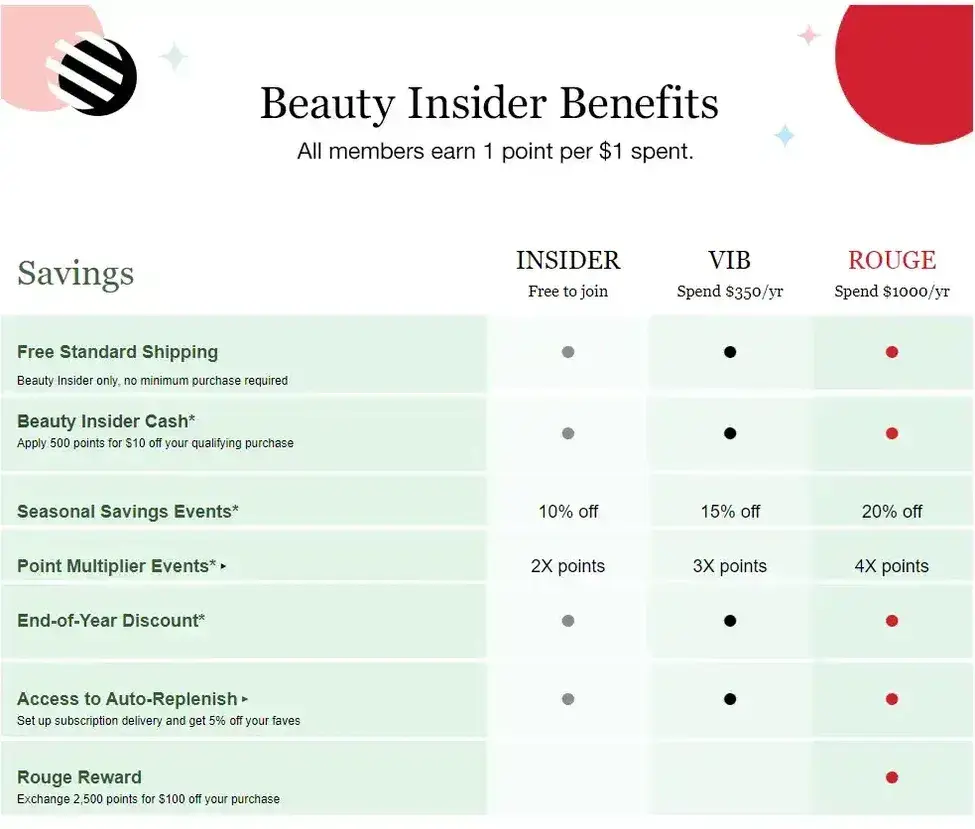
To do behavioral segmentation, you’ll need to gather data from various sources that are related to your website. It is also crucial to analyze the patterns of your customers based on their last interaction. Using a CRM eases the gathering and tracking of customer behaviors such as purchase history, inquiries, referrals, voucher redemptions, and customer complaints.
This segmentation model is highly relevant when you‘re running PPC or YouTube ads. It ensures you don’t consume your ad spend on customer segments that aren't a fit.
Benefits
- Reduces the churn rates by personalizing the message for abandoned carts.
- Monitors negative user behavior and feedback so that customer service reps can quickly solve issues.
- Offers purchase-history-based recommendations to existing users.
6. Needs-Based Segmentation
Not all the products that a company offers will be the right match for every customer. Needs-based segmentation narrows down and matches your customers based on their current problems.
Examples of segmentation by customer needs include product or service must-haves and needs of specific customer groups. Businesses use these problems to offer different solution-based features catering to different groups and sub-groups.
Take an example from HubSpot. At HubSpot, our main feature is our CRM, but we further expand to a wider user base with offerings like customer service tools, sales tools, content management systems, operations tools, and ecommerce.
This way, HubSpot serves a wide user base with different needs. Running customer surveys, participating in online forums, and reading online reviews along with the analytics tools help drive the needs-based campaigns.
Benefits
- Uncovers hidden market potential and solutions that a brand can offer.
- Creates personalized messages for different customer segments.
- Helps identify common problems in the market.
7. Value-based Segmentation
Value-based segmentation provides insights into the value of your customers. Which group of users provides a better ROI? Where are you losing most of your money?
Examples of segmentation by customer value include the economic value of specific customer groups for the business. Use this customer segmentation model if you sell products or services at high and low prices.
Brands like Netflix or Amazon Prime use value-based segmentation to figure out their most prominent plans. For example, Netflix offers four subscription plans: Mobile, Basic Standard, and Premium. Out of these, the Standard plan is the most popular while the mobile plan is the least.
Thus, Netflix can use this data to offer incentives to low-engagement plan users or cut costs.
Benefits
- Brands can optimize resource allocation for highly engaged users.
- Gives a better understanding of the different segments of the existing customer base.
- Helps boost ROI by targeting high-value customers with personalized messaging.
Let’s look at some customer segmentation examples to show how you can apply these models to your segmentation strategy.
[Psst: Looking for a template? Check out this free customer segmentation template to get started!]
Demographic Customer Segmentation
1. Gender
Many businesses start with gender segments when building a customer segmentation program. While this is a quick way to start, ensure this segment is inclusive. Have plenty of gender categories to ensure you accurately segment customers into groups where they feel comfortable.
2. Age
Age is another common factor that businesses use to segment customers. After all, age tells you a lot about the person interacting with your business. For example, a 30-year-old single person living in Boston won't have the same budget and interests as a 70-year-old retiree in Oklahoma.
3. Occupation
Occupation can reveal a lot about customers’ interests and availability. It can also give you an idea of their budget and annual income — especially if they don’t share this information with you directly.
4. Household Income
Household income gives you an idea of how much money a customer can potentially spend with your business. Keep in mind that income isn’t the only factor at play here. Location, occupation, family structure, and more will also influence a customer’s budget.
5. Marital Status
If marital status is important for understanding your customer base, then you can segment buyers in a few different ways: whether they have a spouse, are in a relationship, or otherwise.
Collecting this data will vary based on your organization’s marketing strategy.
Geographic Customer Segmentation
6. Location
Location is important to make your marketing strategy feel more personalized by region. First, it tells you where your customers are and how you can find them.
This data also tells you how you should approach certain segments if they live in different areas. For example, how you market to people in New York City will likely differ from how you market to people from Walla Walla, Washington.
7. Preferred Language
It’s important to know the language that your customers prefer to speak. This allows you to communicate more clearly and makes it easier for customers to interact with your business.
8. Transportation
Out-of-home advertising is getting more and more advanced. Transportation, for instance, can also present a valuable marketing opportunity for your business.
For instance, if your customers take the subway to work, you can buy ad space on trains and popular subway stations, as well as digital billboards throughout cities.
9. Workspace
Understanding how and where your customers work can be valuable insights depending on your line of business.
Behavioral Customer Segmentation
10. Life Cycle Stage
Life cycle stage attempts to clarify which part of the customer journey a particular buyer is in. Are they a new lead who is ready for a sales conversation? Or are they a loyal customer who is willing to advocate on your business’s behalf?
Pierre mentioned that understanding where customers are in the life cycle and segmenting them based on their journey can help with upsells. He says, “Segmented campaigns targeting mid-value customers with personalized offers saw a 12% increase in upsell success rates compared to generic campaigns.”
Knowing where the relationship stands between you and your customers can help you form a more effective marketing strategy.
11. Website Activity
Website activity tracks anything your customers do while engaging with your website.
For example, you could segment customers based on the first page they interact with. Or you could segment them based on how many times they’ve visited your homepage or clicked on a certain page element — like a call-to-action.
12. Last Customer Engagement
You can learn a lot about customer relations from the last interaction a customer has with your business. If it was a positive interaction, they might be ready for a specific promotion based on when they are in the buyer journey.
If the interaction was negative, you might want to ping your customer service or success team to strengthen the relationship.
13. Ecommerce Activity
Like website activity, ecommerce activity refers to actions customers take in your online store.
For instance, abandoned carts are a common customer segmentation choice. Pierre and his team segment customers based on the status of their shopping carts. He says, “Customers who frequently abandon carts are flagged for proactive engagement, an automated follow-up email sequence offering incentives or assistance. This strategy reduced cart abandonment by 8%.”
You can also segment customers based on the products they’ve purchased or product pages they’ve seen but haven’t converted on.
Psychographic Customer Segmentation
14. Values
Values are usually harder to identify than demographic information, like age or location. To determine a customer’s values, you need to understand their needs thoroughly, possibly through one-to-one interviews or surveys.
From there, you can use this information to empathize with the roadblocks they face when trying to achieve their goals. When you can align with the customer in this way, it’s easier to see what they value most in a product, service, or brand.
15. Interests
Values are characteristics and actions that customers admire the most. But, interests are things that customers enjoy that may not relate to your business.
As a bonus, you can foster relationships with adjacent businesses. This lets you reach customers in places you might not have thought about before.
16. Personality
Personality can be hard to sum up in one phrase or sentence. But, you can segment customers based on unique personality traits.
Are they outgoing? Introverted? Comical? Serious? You get the point. The more you know about their personality, the more you can adapt your marketing to fit your audience.
Technographic Customer Segmentation
17. Device Type
Device type segments users based on the type of device they‘re using to interact with your website, whether that’s a phone, tablet, or computer.
For instance, if most of your website visitors are using smartphones, then you know mobile responsiveness is compulsory for your site.
Or, you might consider building a mobile app to capitalize on users who are interacting with your brand while on the go.
18. Browser Type
Browser type refers to the internet browser that a customer is using. For example, are they using Google Chrome, Safari, DuckDuckGo, or Mozilla Firefox?
With dozens of internet browsers available, each displays your website, emails, and apps differently.
This makes it important to understand what your customers are using so you can test whether your marketing content displays properly on those browsers.
19. Original Source
Original source is a segment that helps you understand where your website visitors come from.
This lets you know if people are discovering your site with search engines like Google. It also shows you if they're coming to your pages from social media, email, or a referral from another site.
Once you know how your customers are finding you, you can optimize this conversion path. This can help make it easier for more people to locate your site.
Value-based Customer Segmentation
20. Customer Satisfaction Scores
Whether you use CSAT or NPS, customer satisfaction scores tell you a lot about recent service interactions. Higher scores mean customers are happy with your service. Lower scores show a risk of churn.
Pierre tells me, “After introducing segmentation-based support, CSAT scores for high-value customers rose by 15% within three months as they appreciated the tailored, high-touch approach.”
Segmenting customers into promoters and detractors can help you increase the value of your most loyal customers. It can also help you make sure that unhappy customers get the support they need.
21. Number of Purchases
The number of purchases that a customer makes is a primary factor in determining customer value. The more purchases they make, the more valuable they are to your business.
22. Average Purchase Value
The higher the average purchase value is, the more overall value the customer offers to your business. Those customers who make repeat or regular purchases from your business are invaluable.
Pierre tells me finding high-value customers is one of the most valuable approaches to his customer segmentation strategy. Pierre says, “I categorized customers into tiers — high-value, mid-value, and low-value — and aligned support levels accordingly. High-value customers were given priority access to live chat and dedicated account managers, while mid-value customers received proactive check-ins through automated email workflows.”
Needs-based Customer Segmentation
23. Product Attributes
Some groups of customers need specific features from your products to use them.
For example, if your website isn‘t web-accessible, you could be inadvertently alienating individuals with disabilities. Make sure you’re aware of customers with these needs so that your website is as inclusive as possible.
24. Service Needs
Service needs are the services that customers require when interacting with your business. Let's take HubSpot as our example.
If you're a new HubSpot user, you might want to go through an onboarding process to learn how to use our products. Should you already have experience with HubSpot in the past, you might decide to opt out of this service.
Finding these needs will ensure you properly support your customers.
25. Delivery Method
Your product isn‘t useful to your customers if you don’t deliver it at the right time or in the right way. This segmentation option allows you to categorize individuals who have specific shipping or delivery needs.
Your business goals should inform your customer segmentation strategy. By thinking about what you plan to achieve company-wide, you can create a customer segmentation strategy that can help you:
- Organize your customer base.
- Easily manage targeted communications.
- Choose top sales prospects.
While you can segment your users and clients in many ways, these steps can help your team avoid some pitfalls along the way.
Featured Resource: Customer Segmentation Templates
Follow along with HubSpot's Free Customer Segmentation Templates. Segment your customer base by demographics, behaviors, product-related characteristics, or any criteria you see fit. Download the templates now to keep your customer base organized and draw quick and actionable conclusions.
1. Determine your customer segmentation goals and variables.
Your business may already use buyer personas. If you run a small business without one, consider developing buyer personas because they can help with customer segmentation.
With personas, you have a sense of your customers' demographic, geographic, and technographic details. This info can help you match buyer personas to specific goals.
Goals
For instance, if you have three buyer personas like this:
- Jane — a small business owner.
- Katherine — a mid-level business owner.
- Peter — CEO of an enterprise company.
You could have conversion goals of 10% for Jane‘s persona, 5% for Katherine’s persona, and 2% for Peter's persona. This simple analogy works when you have products and pricing levels that suit each persona.
Segmenting may get complex when using customer segments to solve specific business problems. You may not have enough data or the right data to deliver the best customer experience.
Here, use demographic or psychographic segmentation to grow the top of the funnel. Start by thinking about what makes a customer valuable to your business:
- Is product fit or profitability more important?
- Do they make repeat purchases?
- Are they active in communities online?
- Where do they drop off during the buyer journey?
As you continue this process, include important team members from across the organization. By leveraging their unique experience and viewpoint, you can create more useful customer segments.
Variables
Before you move to the next step, you'll also want to look at variables within each target segment.
For example, say one of your customer segments is mothers between the ages of 30 to 35. Data shows that about half of this segment buys at the end of November.
But do you know whether they're buying your product as a gift or to use at home?
This variable seems small, but it can make a big difference in marketing and sales messaging for this segment.
2. Set up and prioritize customer segmentation goals.
Once you have a clear picture of your goals, it's time to prioritize, as your data will probably increase.
Often, this increase in data can be overwhelming, causing some companies to go through the effort of segmenting only to continue to send the same message to every customer.
One way to approach this is by organizing the largest segments first and proceeding from there. That way, you have large groups of people to communicate with or market to immediately.
Another option is to rank segment projects by performance, like purchase value. With the order set, it's time to set up each project.
Step 1. Set an objective.
Each customer segment project should have a SMART framework.
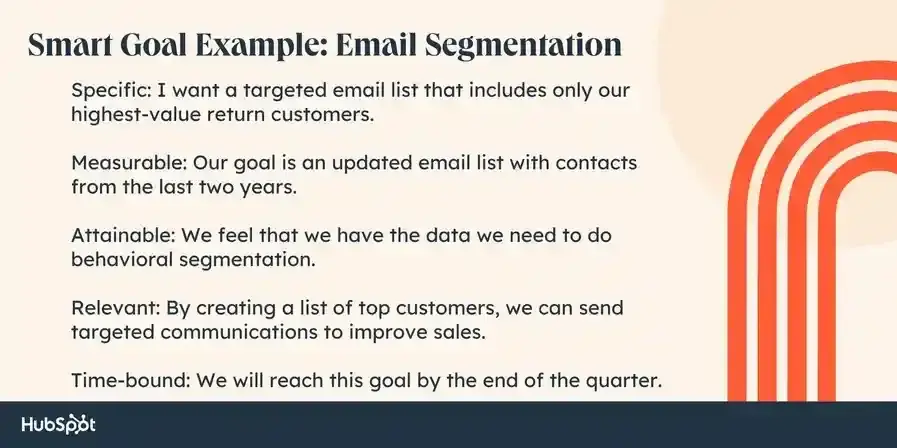
For example, your goal may be to create a customer segment for a new product release.
You’ll want to see which customers on your current mailing list may be a fit for this new product. You’ll also want to decide how to connect with the right new prospects.
A SMART framework can help you define your objective before you get to work. This will help you answer questions like:
- How will you measure success for your new segment?
- Is there enough demand for this group to be a useful customer segment?
- How long will it take to build and define this group before product launch?
- What is the deadline?
Step 2. Involve stakeholders.
Stakeholders for your segmentation project will usually include internal teams and employees. Other stakeholders might be:
- Current customers.
- Local businesses.
- Vendors.
- Contract employees (like freelancers).
Segmentation projects can sometimes get siloed. This can create a situation where the people who can get the most use of the information don’t get what they need.
To avoid these issues, talk to stakeholders about their role in the project in advance. It’s also a good idea to figure out how involved they would like to be in the process.
Step 3. Define project scope.
Defining the scope of each project can help you avoid overlaps and confusion later on.
Set clear boundaries for target market segmentation. This could include:
- The total number of segments.
- Data sources.
- Stakeholder expectations.
- Resources and budget.
Step 4. Define project deliverables.
Lastly, you’ll want to clarify what the results of your project will be.
Final customer segmentation deliverables might include:
- An outline of your process.
- Tenets that define the scope of each target segment.
- Workflow wireframes.
- Segment profiles.
3. Collect and organize your customer data.
To collect customer data, you can use platforms like your CRM. After exporting the data, analyze it to find common themes.
For instance:
- Are you seeing lots of customers from a specific region?
- Does a particular age range come up frequently?
- Do you see an equal mix of males and females on your list?
These questions will help you figure out the different segments you can create.
While some customer data is readily available for customer segmentation, other data may take more time to pull together.
This guide can help you find the right customer data types for your new market segmentation.
As you collect your data, think about the information you need to create a useful segment.
Anecdotes can sometimes offer a clearer picture than empirical data. They can also offer talking points and insights to better target your new segments.
Check out these ideas for anecdotal customer data collection:
4. Segment your customers into groups of your choice.
After pulling the customer data you need, it’s time to build your segments.
To get the best results from customer segmentation, approach them with a few ideas in mind.
Tip 1. Make segments easy to use.
While the segments might be complex to compile, they need to be easy to use by other team members.
For instance, a local grocer segments their in-town shoppers from out-of-town shoppers, which can help with more personalized outreach.
But these segments make little sense for a multinational sporting goods store. What defines “out of town” simply doesn’t apply.
Tip 2. Use machine learning.
Applying automation powered by machine learning in order to build your customer segmentation can be a huge time saver for your team.
This helpful article outlines how you can use HubSpot to segment contact lists and create communication workflows for subsets of customers.
Tip 3. Make customer segments the right size.
Don’t go too narrow in your segments. In other words, ensure you create useful segments that are still large enough to cause a measurable impact on profit.
Tip 4. Make them easy to access.
Your customer segmentation should start with your marketing strategy. Each segment should be well-aligned with your marketing and sales channels.
For example, say your marketing strategy focuses on email and Facebook, but you’re creating a Gen Z segment. Of this group, 62% are on Instagram, but only 34% are on Facebook.
So, while this segment may be a fit for your business, you might have trouble reaching them.
Tip 5. Create stable segments.
Great customer segmentation takes time. So, the value of your segment has to last long enough for your team to connect and engage in a measurable way.
Behavioral and psychographic data can change quickly. Depending on your products, you may want to use these points less than other qualities that are more stable.
Tip 6. Make segments profitable.
It doesn’t matter how clearly you define a segment of your target audience if they won’t impact your profits.
Each segment should come from an existing product or service that your business offers. And each B2B segment should have a clear set of unique needs that align with business goals.
Tip 7. Understand how different models overlap.
Behavioral and demographic models are usually more useful together than they are alone.
For example, say you sell popular tennis shoes to men. You can create a segment based on ecommerce activity and purchase value.
However, it could be tough to base a marketing campaign on these factors. And what if these buyers are also break dancers from suburban neighborhoods?
You might miss an opportunity to connect with this group. Combining several models gives you a chance to make your brand more diverse and inclusive. It also offers more opportunities to improve your products for your target audience.
Tip 8. Find your loyal customers.
In the rush to find new customers, it’s easy to miss creating segments for customers who are already a part of your ecosystem.
By maximizing your interactions with current customers, you can optimize the average purchase price or the number of purchases a customer may make regularly.
5. Target and market to your client and user segments.
Having customer segments isn’t enough. You need a plan to put segments into action. Here are a couple of simple ways you can make the most of your customer segmentation.
Make communication customer-centric.
Use segment information to decide which messages, content, and products will bring the most value to your clients. Then, craft a strategy that authentically engages with each segment.
You want your customers to feel you understand them and that you’re connecting to help, not just sell.
Create a plan for each segment.
You won’t get the best outcomes by sending slight variations of the same content to each segment. Instead, create a unique plan for each segment.
You can use segment data to:
- Enhance each experience.
- Create more meaningful landing pages.
- Personalize emails.
- Qualify and delight leads.
- Figure out the best timing for outreach.
- Anticipate support needs.
- Create new targeted content.
- Solve issues faster.
6. Run regular customer segmentation analysis.
Finally, while you develop your segmentation to last, you will need to put in the work to make sure they stay useful.
In the end, change is the only constant. While machine learning and automation can help you see how your data is changing, data needs analysis.
It’s up to your business to create a regular cadence to review your segments so that they keep performing.
Customer Segmentation Analysis
Once you’ve got those segments set up, it’s important to go back and revisit them from time to time.
Not only can you confirm these segments are necessary, but you can also analyze whether particular segments are helping you reach your goals.
You can use this process to assess resources, use customer feedback, and get a long-term view of your customer base.
Benefits of Analyzing Your Customer Segmentation
Segmentation analysis can seem like a time-consuming process. But there are many reasons you'll want to analyze your segments consistently.
Customer segmentation can help your business:
- Improve product delivery.
- Boost process efficiency.
- Help you target content marketing and sales outreach.
- Update pricing, plans, and strategies.
- Improve customer relationships.
- Create new offers, products, and services.
- Improve brand awareness.
- Stay ahead of competitors.
- Track product sentiment.
With consistent analysis, your business will be more aware of changes in customer sentiment. This approach can also help you innovate in a customer-centric way. It puts the latest customer ideas at the center of any new business plan.
How to Do Customer Segmentation Analysis
Segmentation analysis isn’t as time-consuming as creating new customer segments. But, each step below is important to make sure that your customer segments are effective for your business.
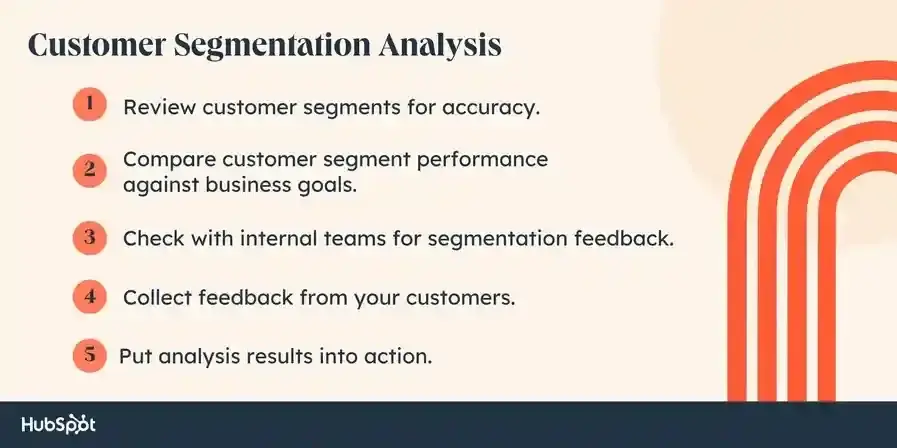
1. Review customer segments for accuracy.
Changes in software, products, pricing, and more can skew data. You’ll want to make sure that the data used to build each segment is still accurate, especially if they’re used across multiple channels.
For example, say you collect behavioral data through your email marketing software but not on social media.
Your first step might be to compare analytics between the two platforms. This can help you see if customer responses within the same segment have changed.
You may also need to repeat anecdotal data collection to update your segments. Have company goals, pricing, or brand reputation changed since you created your segments? If yes, you’ll want to update your data.
2. Compare customer segment performance against business goals.
If you haven’t already, review your key performance indicators (KPIs) for each of your customer segments. Then, compare how well those segments are doing compared to your overall business performance.
Are some segments doing better than others? Are some underperforming?
It may also help to review segment changes alongside current events and cultural shifts that impact demographics.
For example, over 817,669 people moved away from California in 2022, and almost 75,423 left in 2023.
During this same period, more people were moving away from dense cities like San Francisco and Los Angeles to more open inland communities.
Because these shifts impact transportation and development, they can create other changes in customer needs.
Businesses that watch these shifts can better meet customer expectations than those that miss these details.
3. Check with internal teams for segmentation feedback.
Customer segmentation is only useful if it’s used consistently. When you’re analyzing your segments, be sure to loop in all relevant internal stakeholders.
It’s also a good idea to connect with key stakeholders. This can help you make sure that company-wide decisions factor in customer segment changes.
These are a few strategies you can use to quickly collect feedback from your peers and leaders:
- Send email surveys.
- Add targeted feedback forms to employee newsletters.
- Organize a committee or focus group.
- Create a Slack channel for informal feedback.
- Offer project-specific incentives.
4. Collect feedback from your customers.
You may want to supplement your anecdotal research with feedback from a wider group of customers. These strategies for gathering customer feedback can help you improve your response rate.
You might also want to vary the type of outreach by segment.
For example, busy B2B customers might respond well to an in-app survey, while loyalty club members may be open to a customer interview.
Here are some other suggestions for gathering customer feedback:
- Website feedback widgets.
- Long form-based surveys.
- Suggestion boards.
- Newsletter requests.
- Survey incentives.
- Live chat prompts.
- Social listening.
- Customer support outreach.
5. Put segmentation analysis results into action.
It’s often easier to start something new than to change. Once you’ve updated your customer segmentation, it’s important to put those updates into action.
You may need leadership support to revise employee habits. Marketing, sales, and service plans may need to change to align with new customer needs and expectations.
There are many ways that you can help your team understand the value of your updated segments. These might include:
- Presenting your findings to the team.
- Collaborating to update action plans.
- Partnering with managers to address employee feedback.
If you face any resistance, it may help to separate your analysis into separate projects for short-, medium-, or long-term changes.
This can help your business figure out what resources you need to make these changes. It can also help different departments understand what they need to update.
Now, what about a tool to support you while you work through the strategy and analysis steps we just covered?
Customer Segmentation Software
There are many choices when it comes to customer segmentation software. Here are five of the most popular to help you get started.
1. HubSpot
HubSpot offers the ability to segment your customers with static and active contact lists. From there, you can set up contact scoring to use lists to segment your contacts and customers.
The software also offers an option for event-based segmentation. For example, if your company is holding a daylong workshop in Seattle, you could use event-based segmentation to help you locate and inform your customers in the area.
Then, once the workshop is complete, you can use details obtained from attendees to segment your customers for your future events.
These customer segmentation features, among others, are automatically included in HubSpot’s (free) CRM, CMS, Marketing Hub, Sales Hub, and Service Hub (the specific segmentation features within each of these tools are listed here).
Learn how to create a contact management and segmentation strategy with HubSpot.
2. Experian
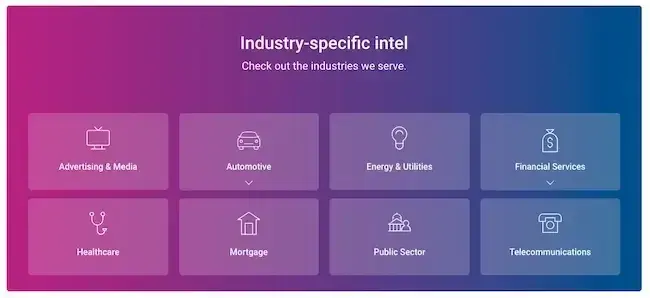
Experian’s customer segmentation software has multiple functions so you can build, view, and manage your segments to meet your business needs.
You can focus on lifestyle segmentation to hone in on the habits and preferences of your customers. You can also find your most economically valuable groups so you can add those details to your profitable customer contact portfolio.
3. Sprout Social
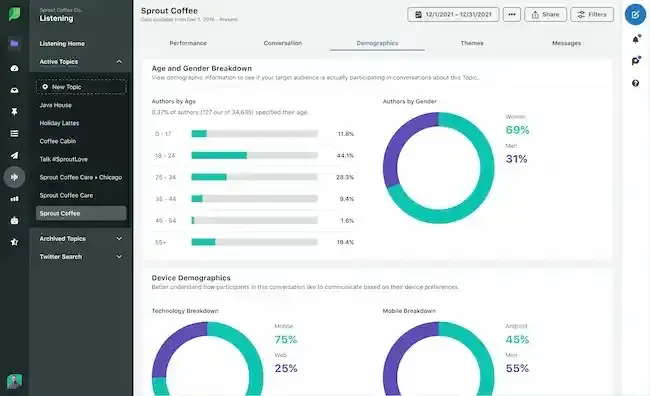
Sprout Social makes it easier to reach specific segments when creating and sharing messages on both Facebook and LinkedIn. Their Audience Targeting feature is a marketing-focused customer segmentation tool.
On Facebook, the tool lets you segment and target customers by interests, gender, age, location, relationship status, and education. Meanwhile, LinkedIn allows you to segment and target customers by business size, industry, location, and seniority.
(Note: Sprout Social integrates with your HubSpot CRM.)
4. Qualtrics
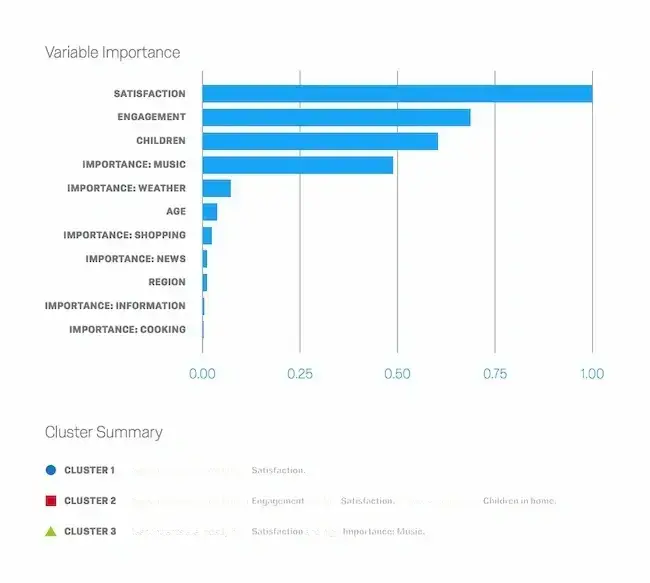
Qualtrics is a customer segmentation software that offers segmentation tools for your customers and products.
You can build studies, organize groups of customers, and analyze the way you segment your customers. In the tool, you can determine the right type of communication for each of your segments.
Qualtrics also has machine learning and artificial intelligence (AI) capabilities to help you learn new ways to segment your customers.
5. MailChimp
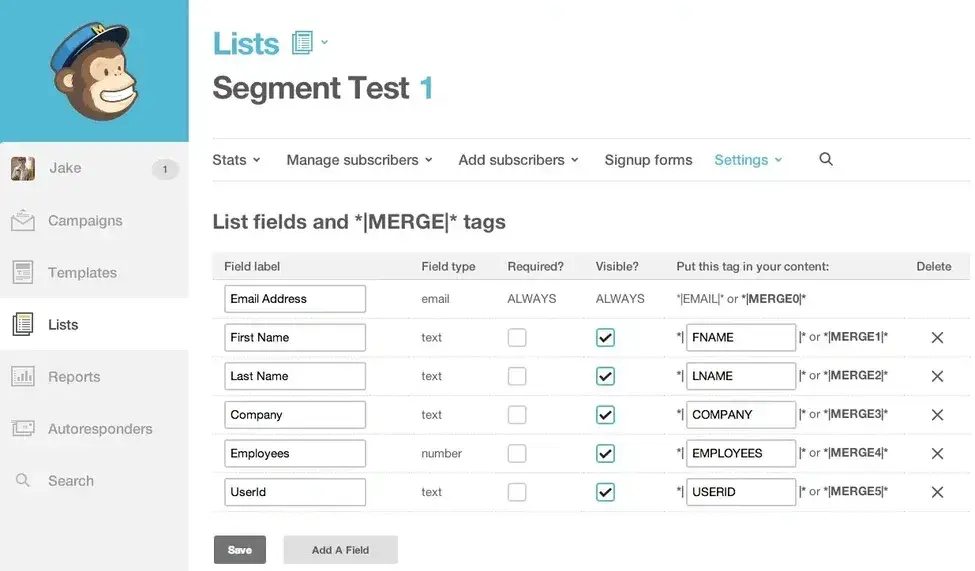
Mailchimp includes a customer segmentation tool. Organize and manage segmented email marketing campaigns to target groups of your contacts and customers.
This lets you send messages that are customized and tailored to each segment’s needs. You can filter between one and five criteria to communicate with your specific group of choice.
(Note: Mailchimp integrates with your HubSpot CRM.)
Segment Customers to Grow Better
Customer segmentation helps you boost conversions by providing more relevant information to your audience. It also helps streamline cross-team and communication efforts so that you can meet customers’ specific needs.
Start working on your customer segmentation strategy and use these tools for support along the way. You have everything you need to exceed customer expectations.
Editor's note: This article was originally published in February 2020 and has since been updated for comprehensiveness.
Customer Segmentation


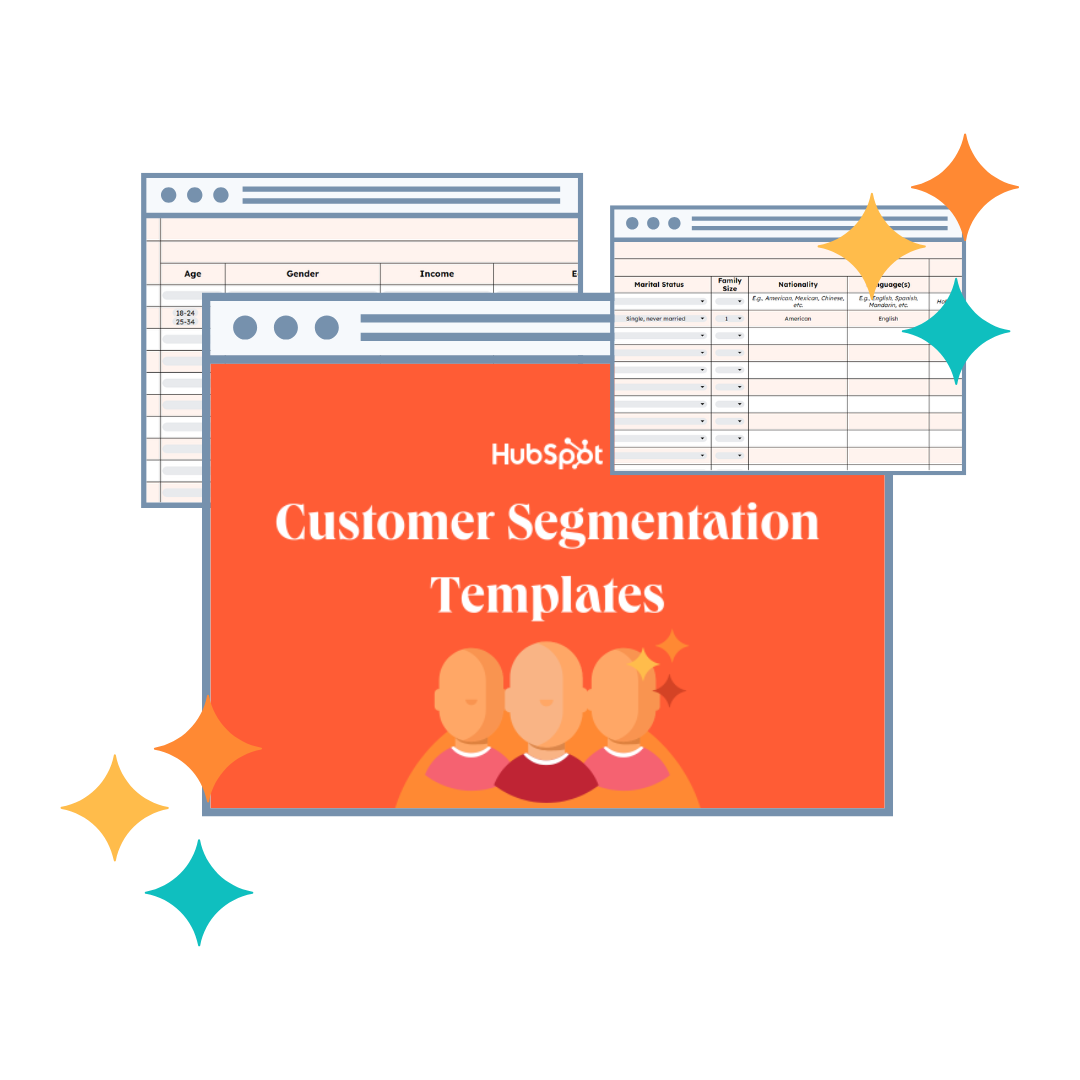
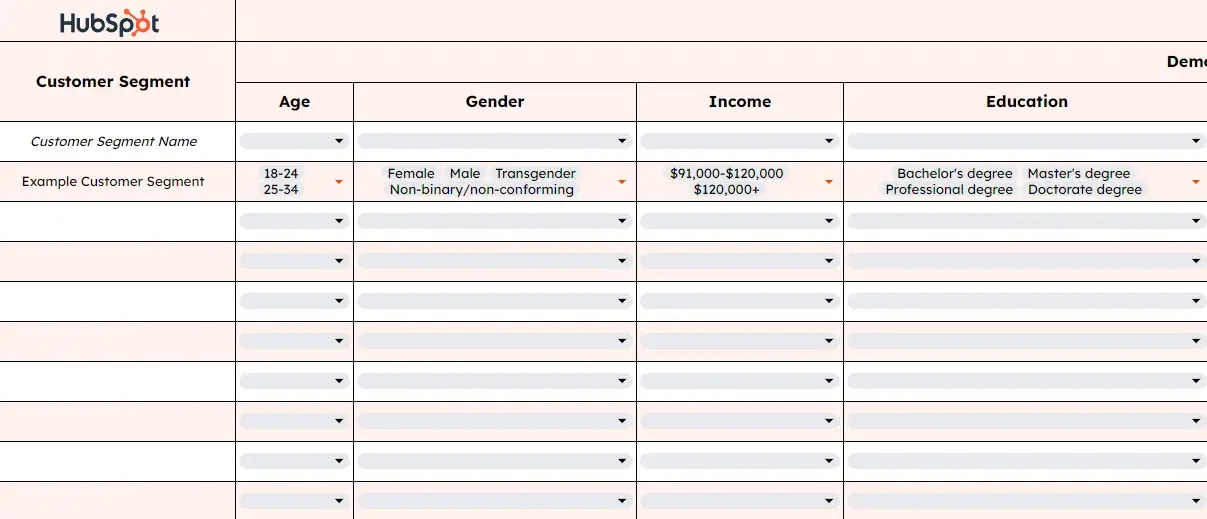
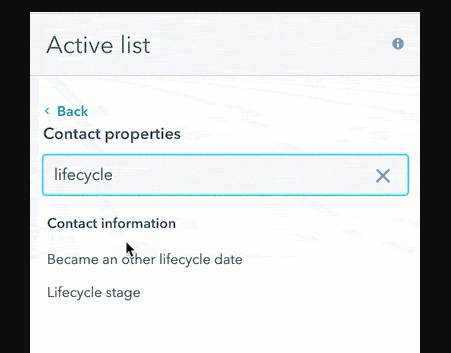
![Customer Profiling in 10 Easy Steps [+ Templates]](https://53.fs1.hubspotusercontent-na1.net/hubfs/53/customer-profiling_2.webp)

![How to Get B2B Customer Segmentation Right [+Tips]](https://53.fs1.hubspotusercontent-na1.net/hubfs/53/b2b-customer-segmentation-1-20250109-7176487.webp)




![8 Companies Mastering Customer Segmentation [+ Examples]](https://53.fs1.hubspotusercontent-na1.net/hubfs/53/customer-segmentation-examples_6.webp)

